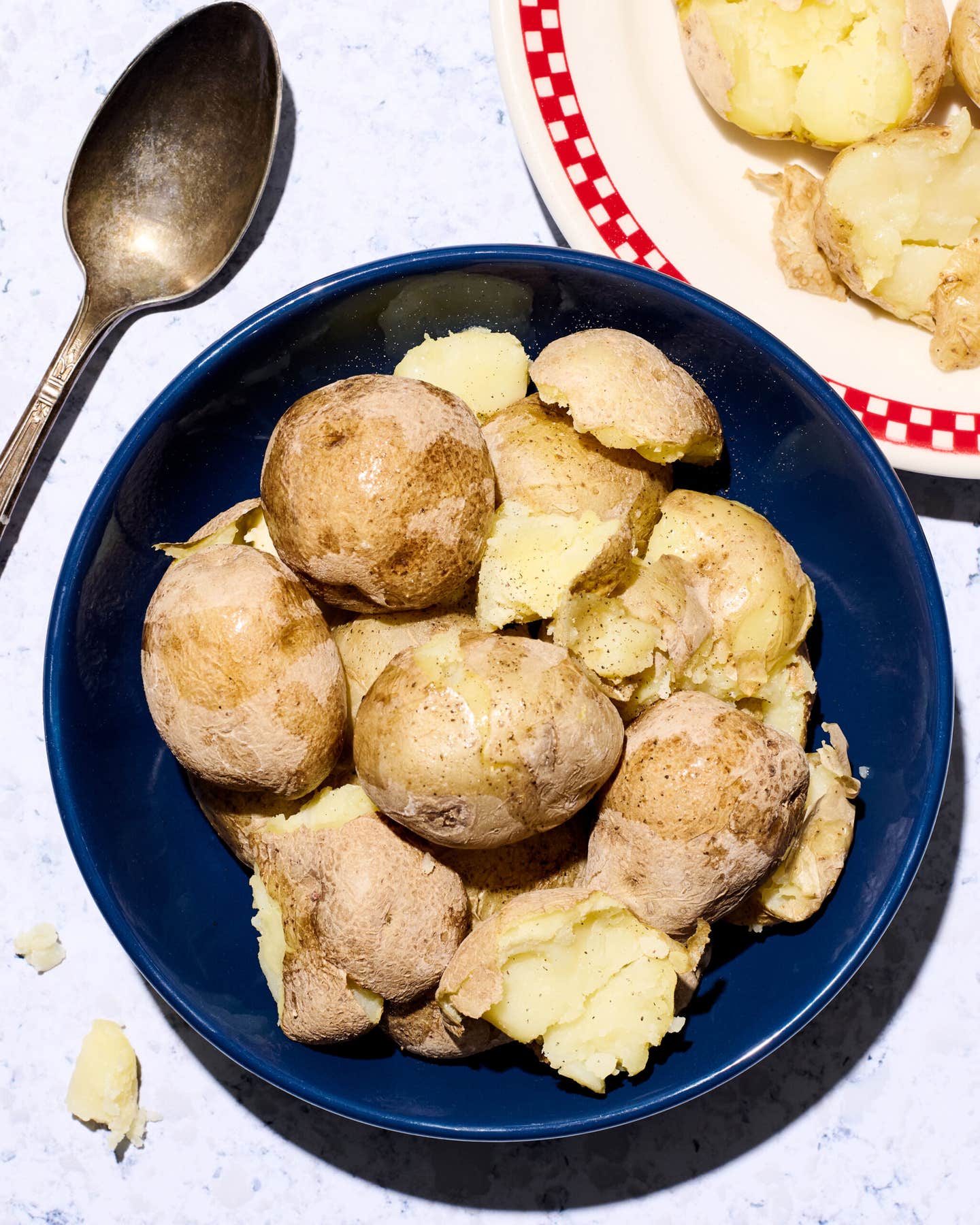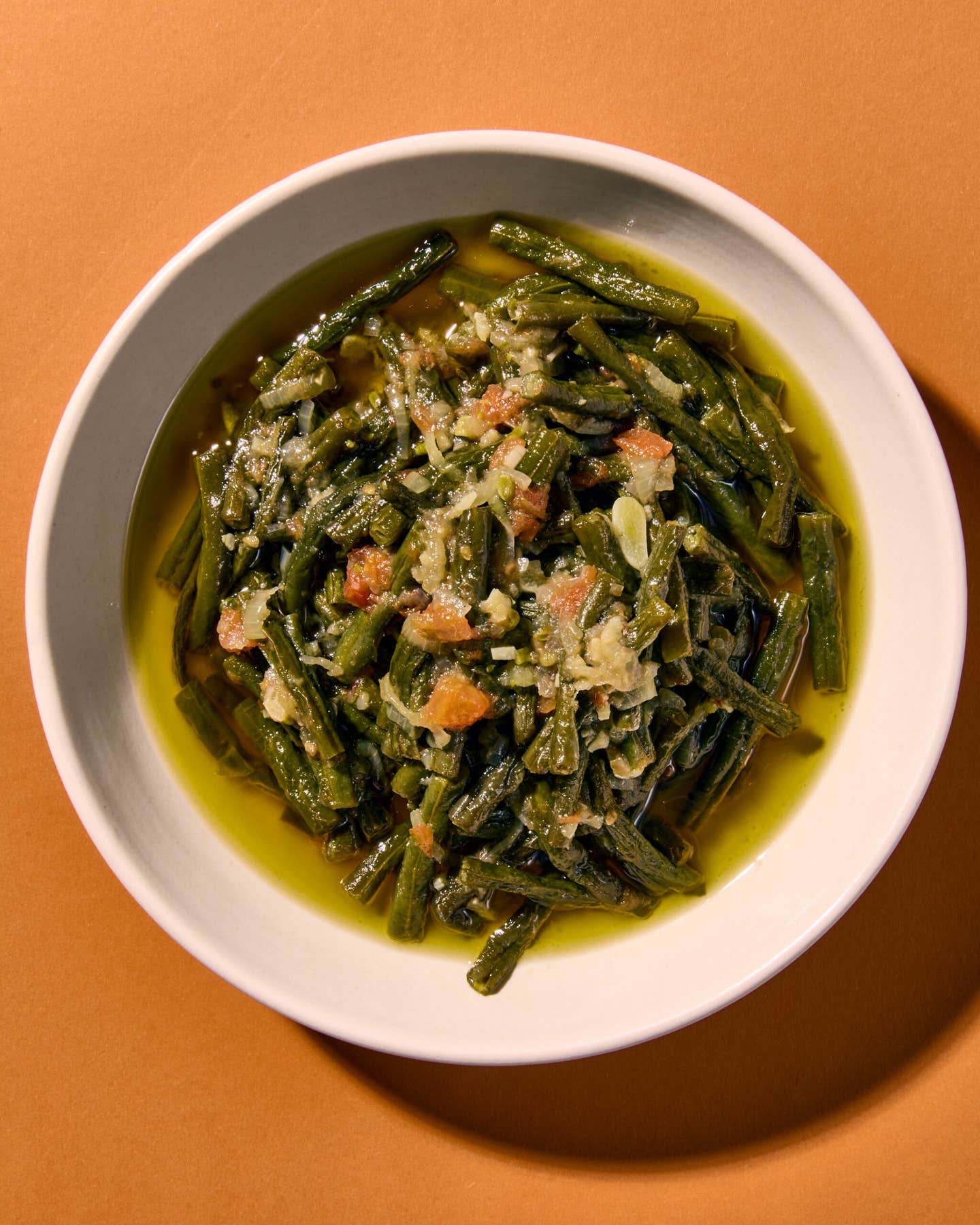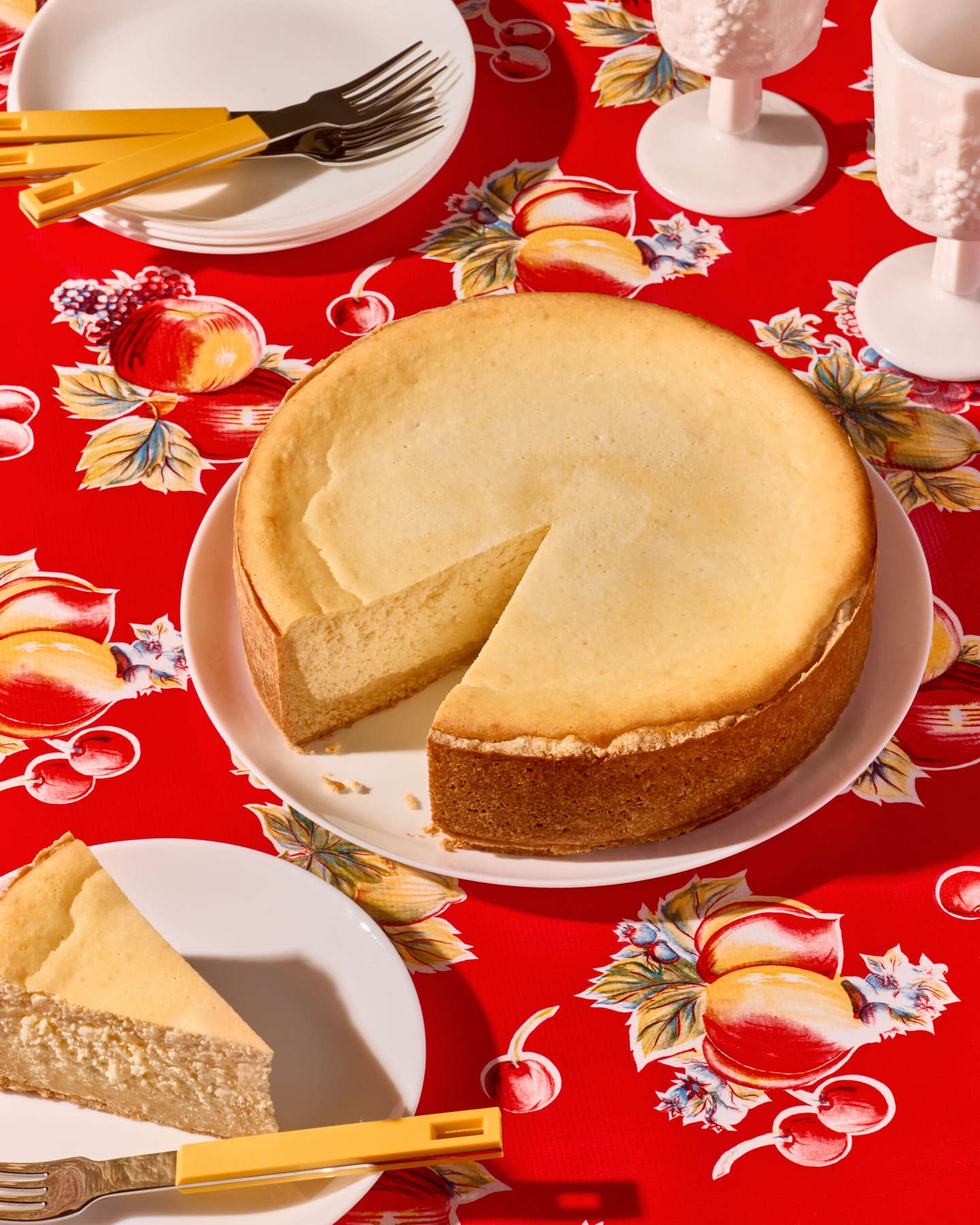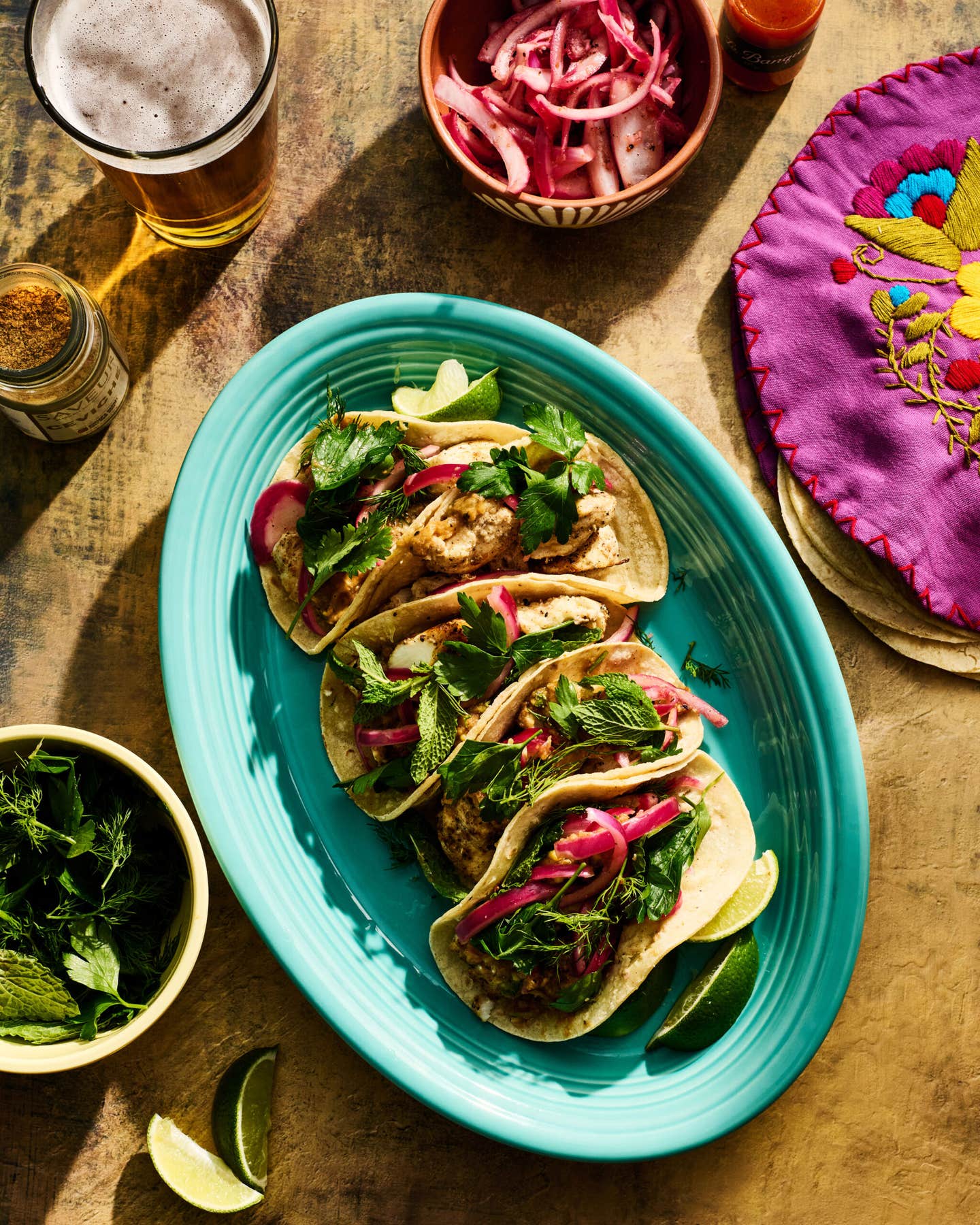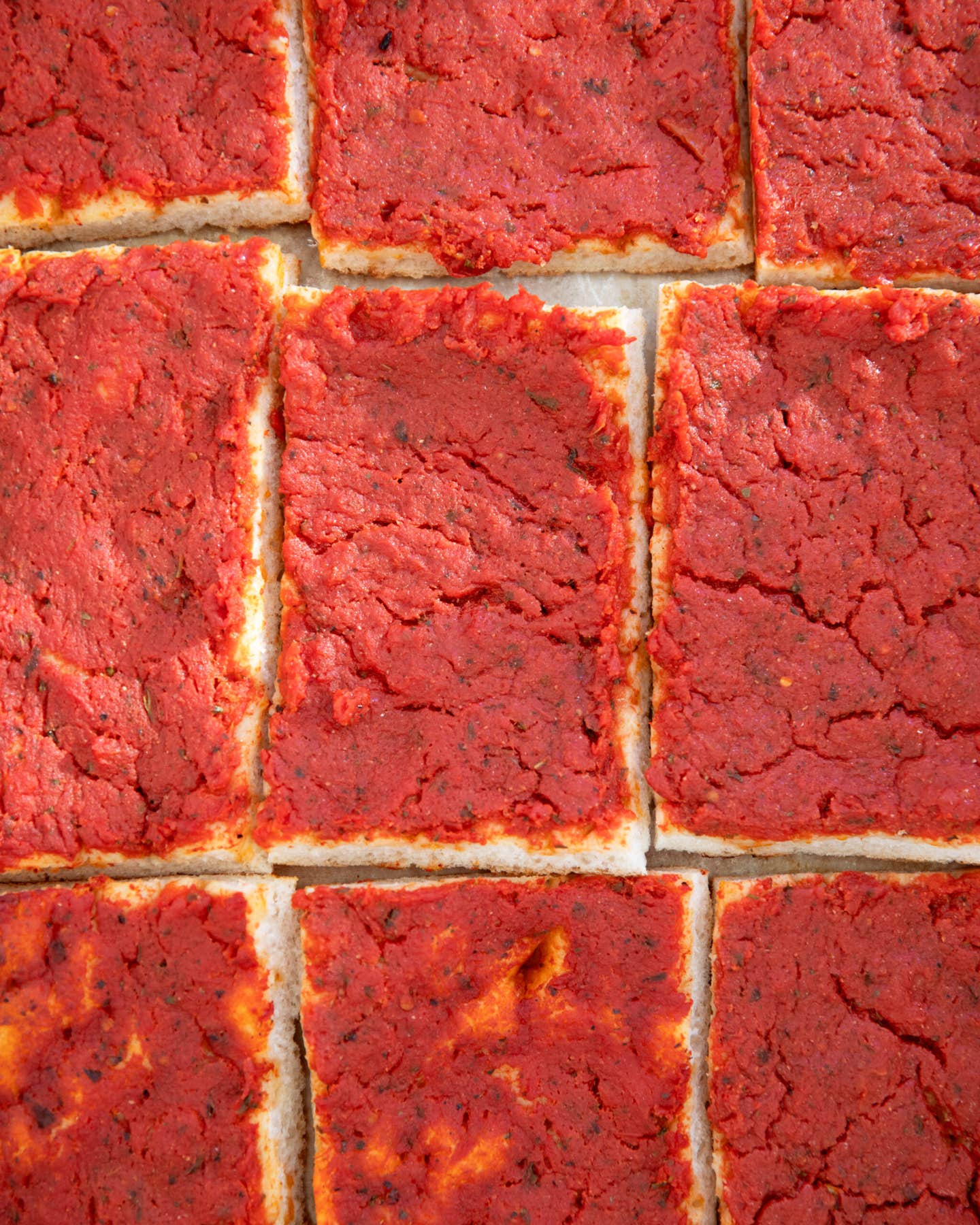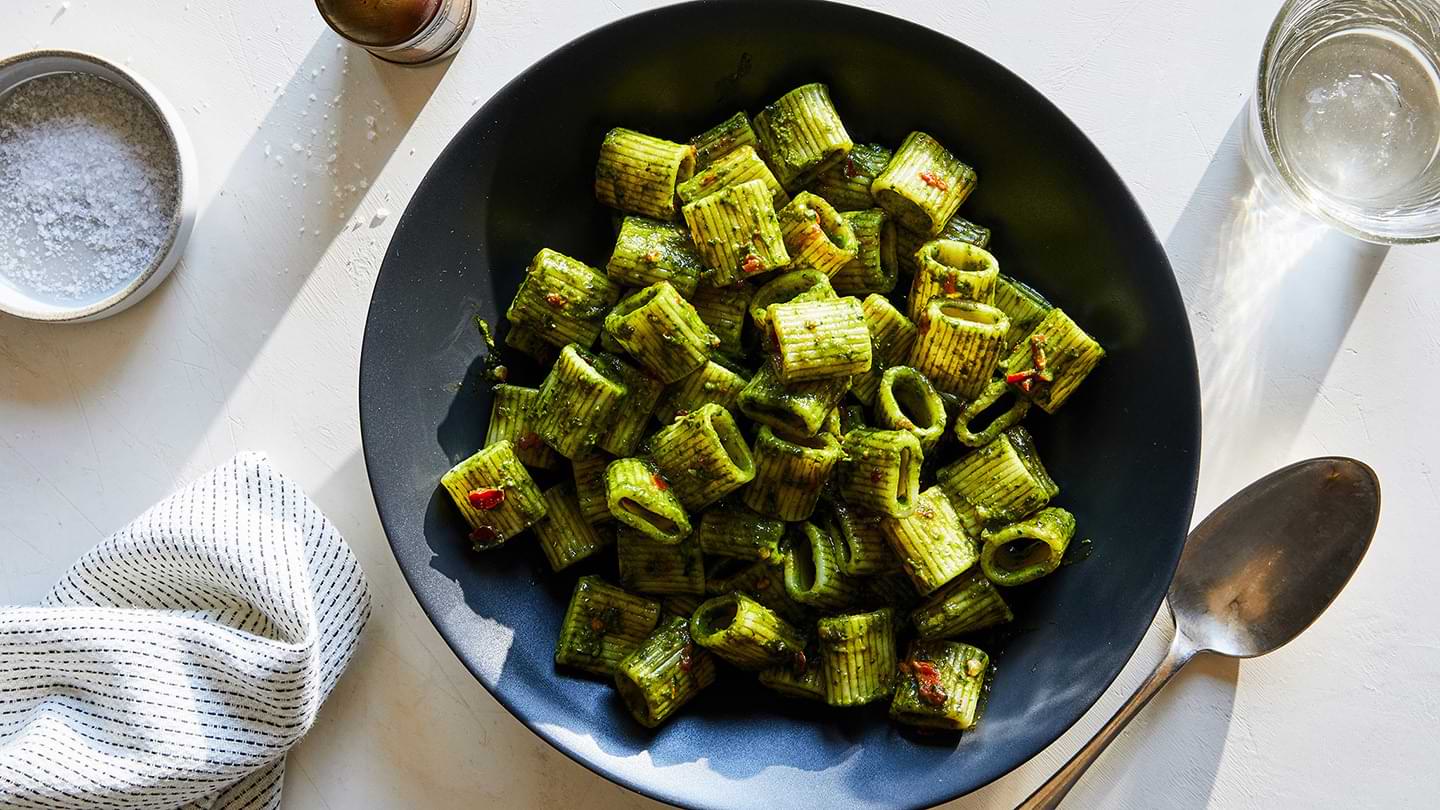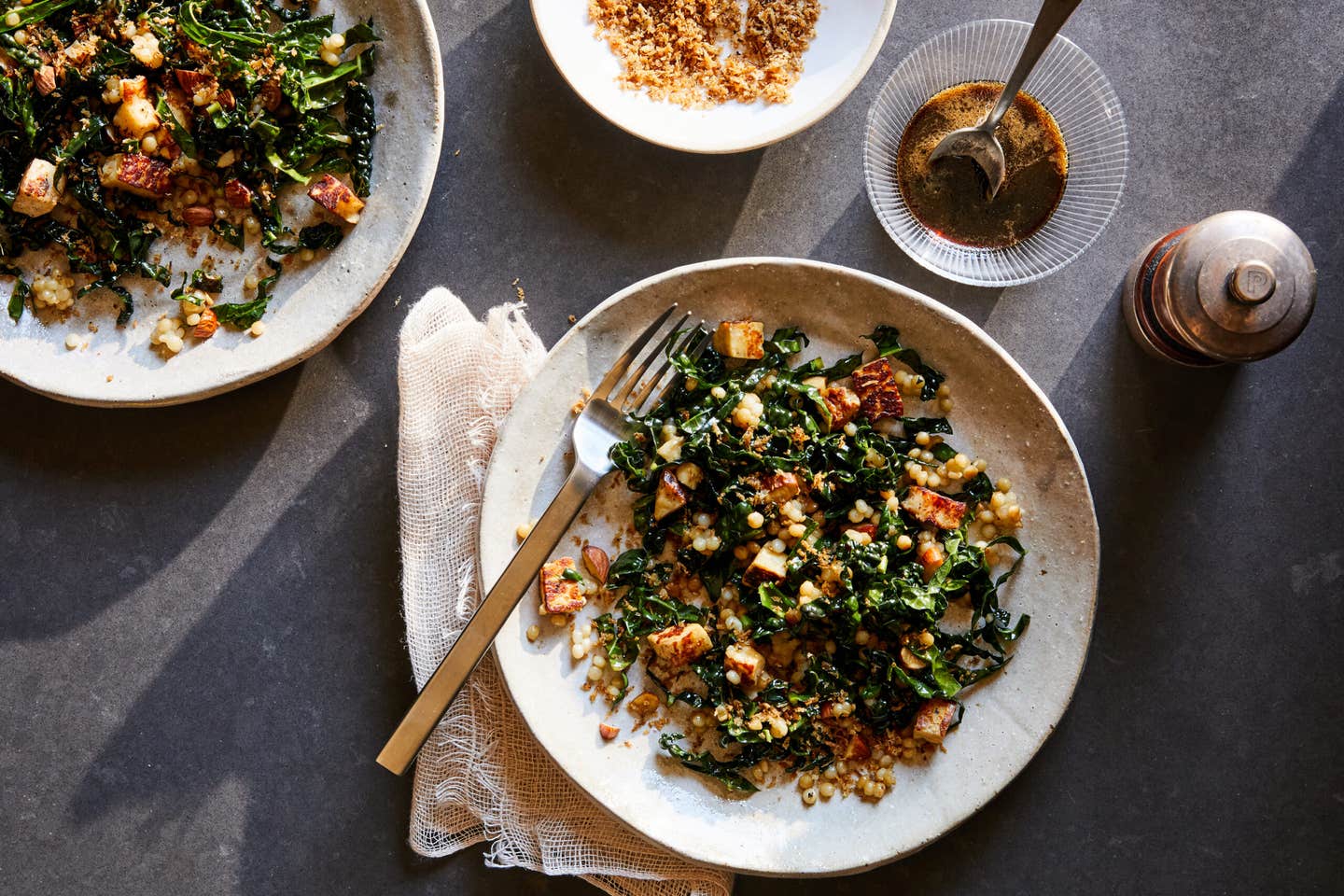
Eating Your Greens Is Easy with These Lovely, Leafy Kale Recipes
From crunchy salads to soothing stews, and even vibrant cocktails, these 11 dishes celebrate the divisive grocery store stalwart.
Kale can be polarizing. Some sneak the antioxidant- and nutrient-rich leafy greens into everything from salads and smoothies to skincare. Others find the cruciferous vegetable overly bitter, too tough, a health food cliché. I think the haters should give kale another chance.
Beautiful lacinato kale is a special treat: Nutty, earthy, and slightly sweet, this variety—also known as Tuscan, black, or dinosaur kale or cavolo nero—has comparatively thin leaves, making it perfect for raw preparations. Curly kale is heartier, with a bit more chew; it lends itself well to a little extra time on the stove, turning tender and silky while still holding its shape in slow-simmered soups and stews. When oiled, salted, and oven-roasted, these ruffled leaves bake up to crispy, snackable chips you can feel good about eating by the handful.
Kale is technically “in-season” in the spring and fall, though it is cold-hardy and can be easily found at farmers markets and grocery stores throughout the year. To help fresh kale last in the fridge, a bit of light prep is in order when you’re unpacking your groceries: Wash and dry the greens well in a salad spinner, then strip the leaves from the stems. Chop the stems crosswise and store in an airtight container, then wrap the leaves loosely in a dry tea towel and slip the bunch into a plastic bag. Stir-fries, bakes, soups—just about any weeknight meal—can all benefit from a handful of this wholesome ingredient. Here are some of our favorite kale recipes from the archives.
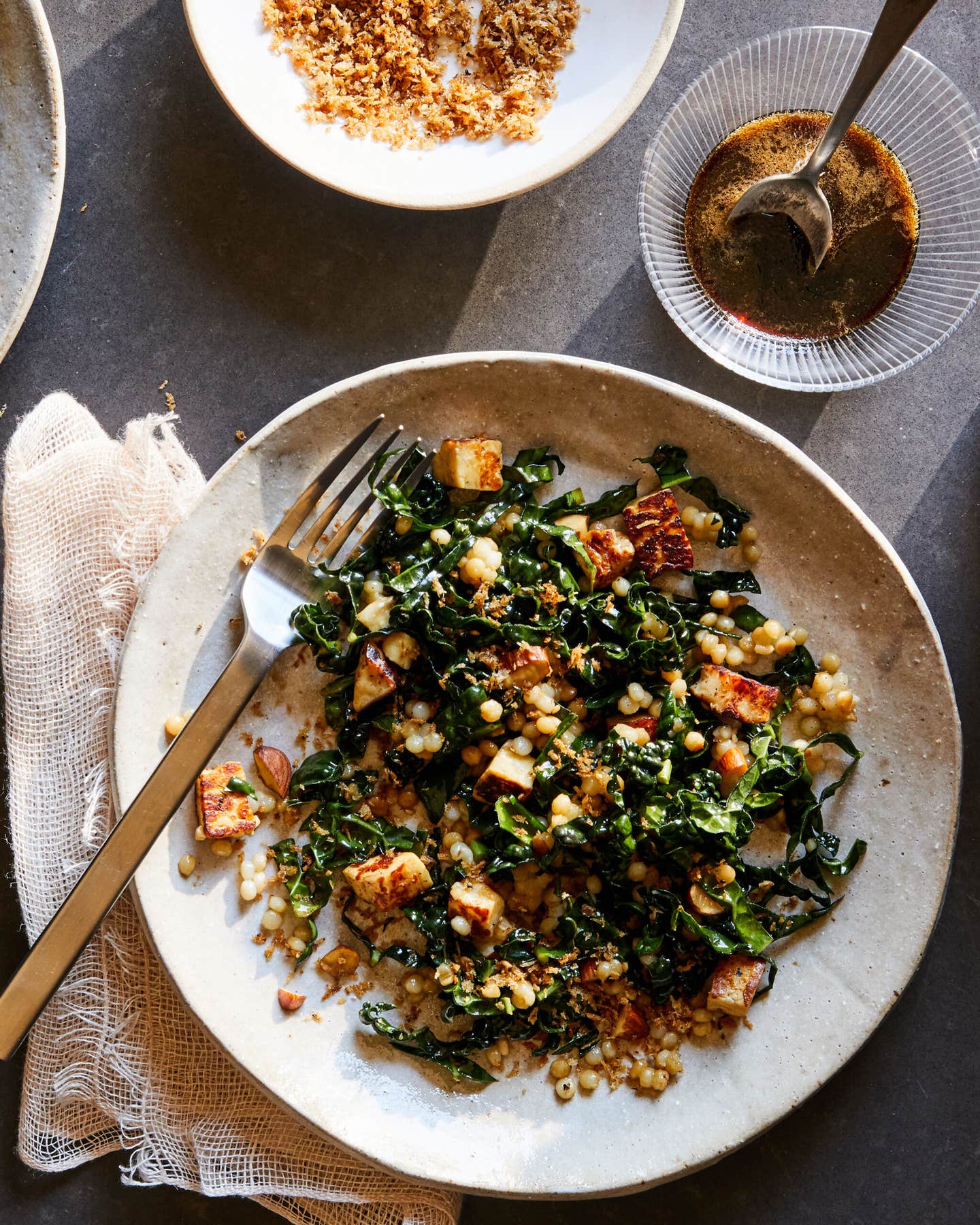
Toasty almonds, crunchy breadcrumbs, plenty of good vinegar, and chewy halloumi make humble kale easy to love in Fatima Khawaja’s weeknight vegetarian recipe. Get the recipe >
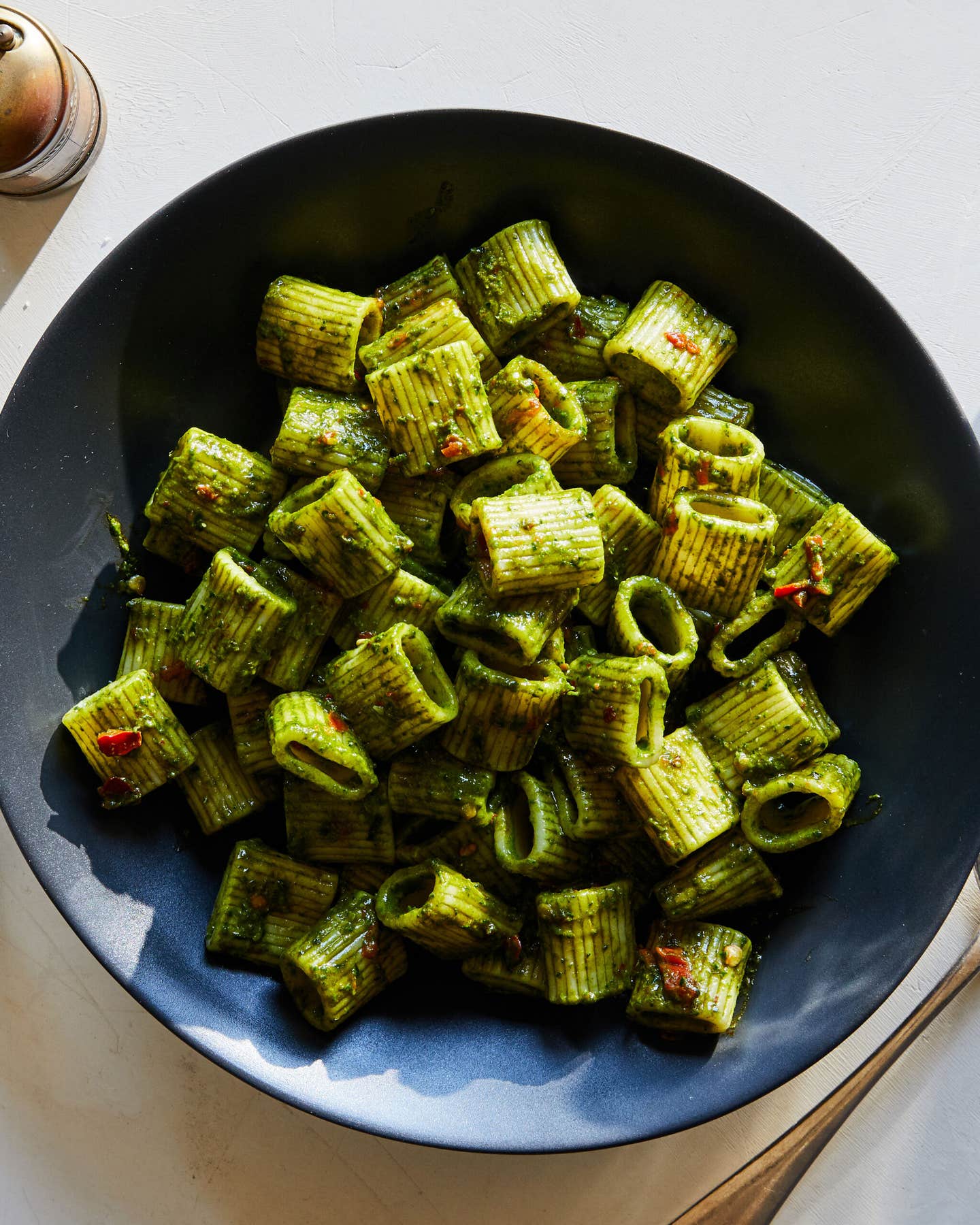
Kale takes center stage here in this silky, anchovy-laced sauce. Blanching the kale before blending softens fibrous greens and preserves their vibrant color. Get the recipe >
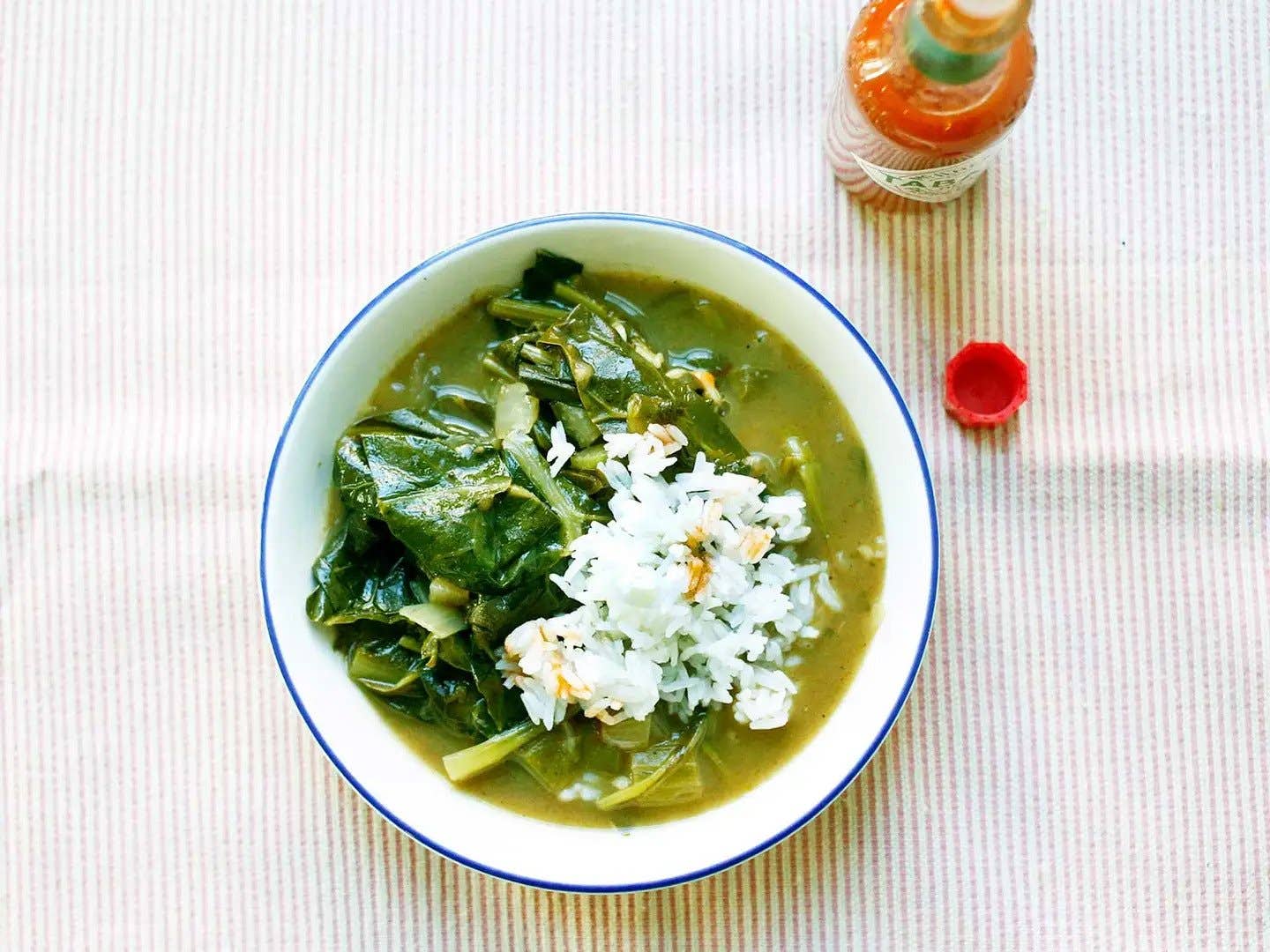
This meatless gumbo, made with various greens, is a traditional Lenten dish in Louisiana's Catholic communities. Ham, sausage, or meat stock is often used in the soup at other times of the year. Get the recipe >
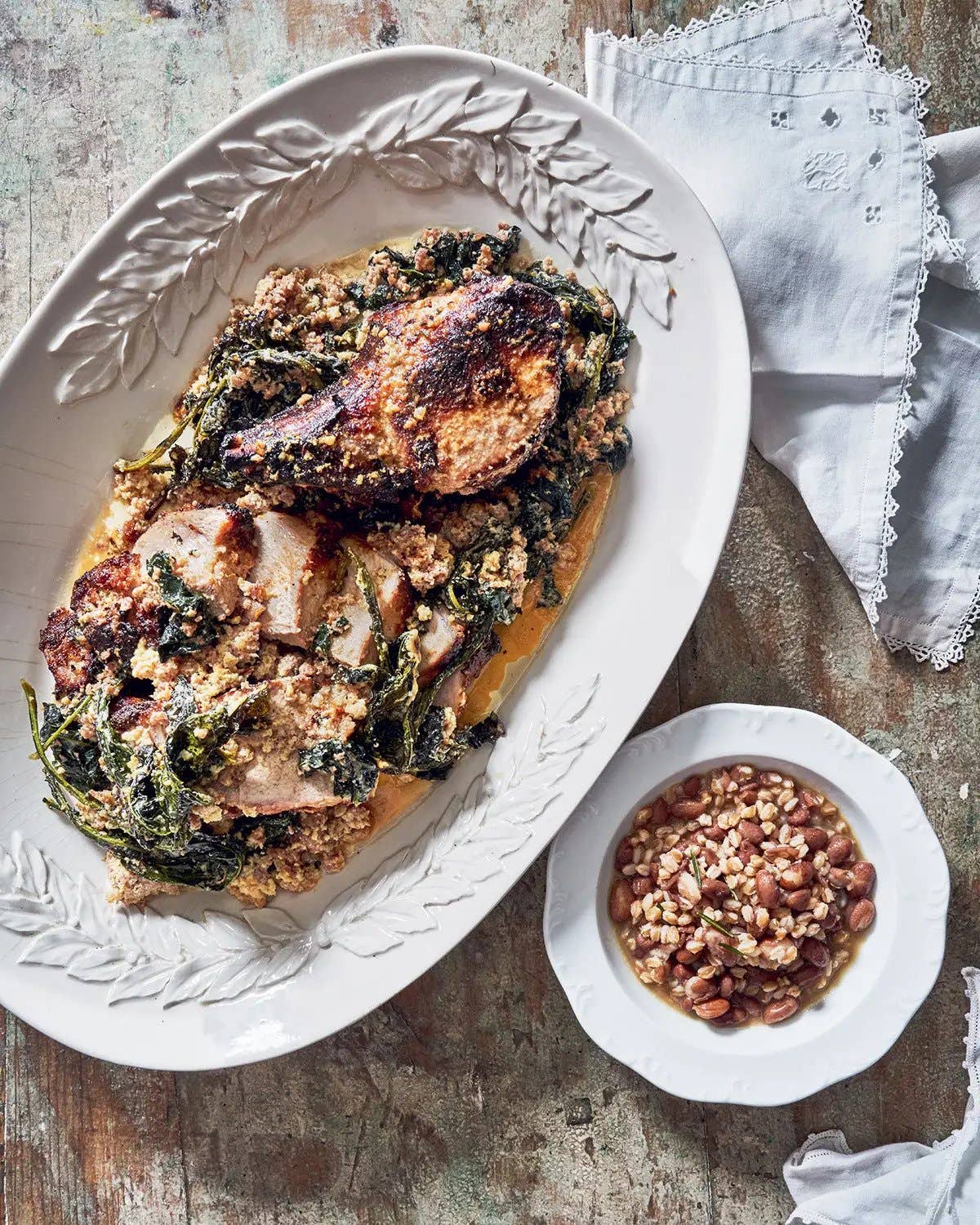
Cooking pork in milk keeps the meat from drying out and accentuates its mild sweetness. Slip a few leaves of Tuscan kale between meaty bone-in chops for Jody Williams and Rita Sodi’s elegant version of this classic Italian dish. Get the recipe >
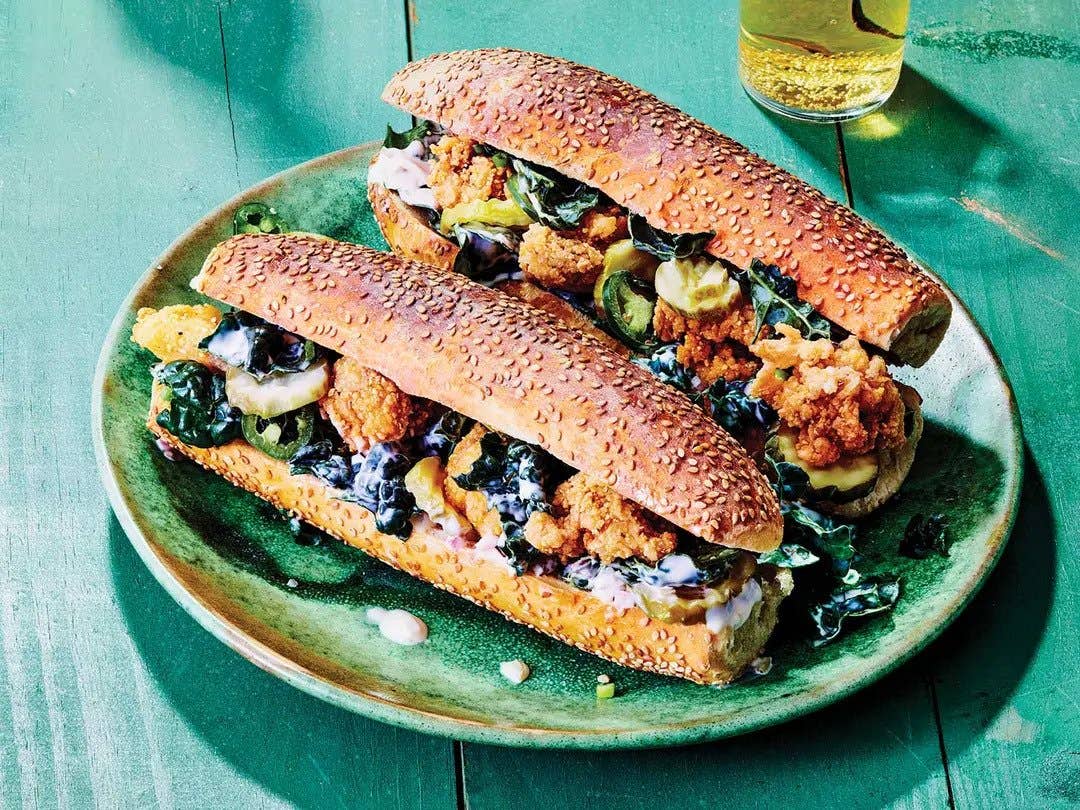
Crispy and crowd-pleasing, these New Orleans-inspired sandwiches are a gateway preparation for oyster neophytes. Get the recipe >
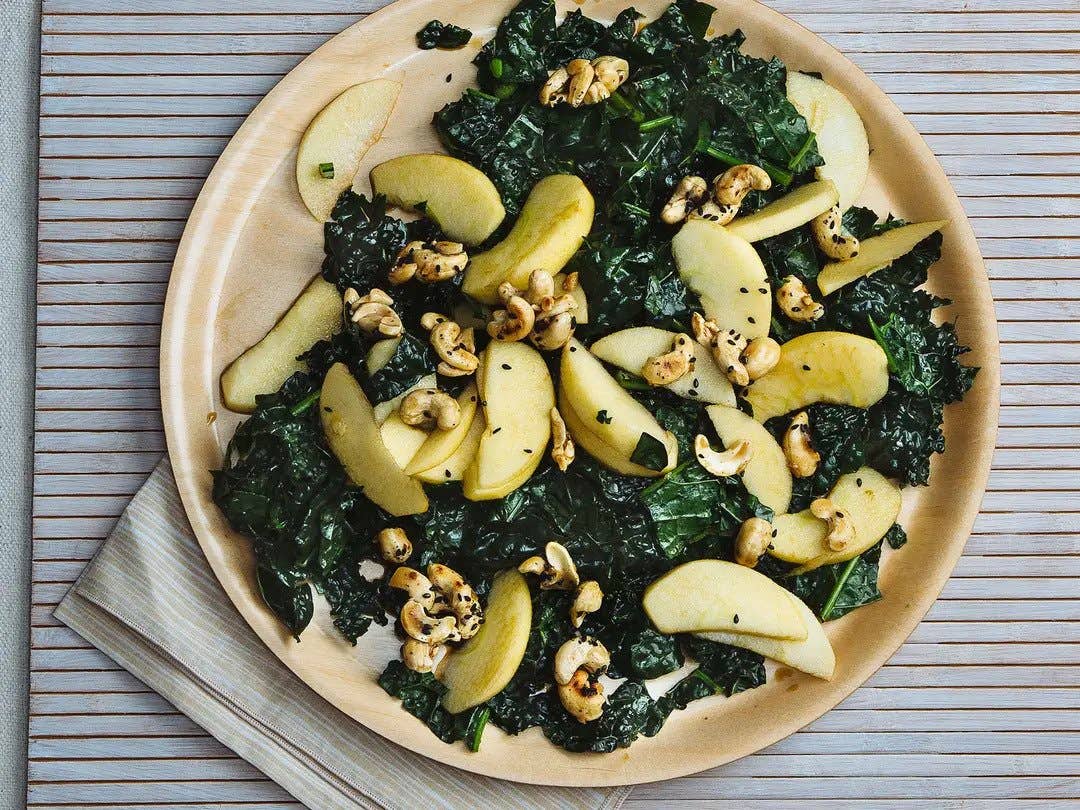
Crunchy, maple-coated cashews, sesame seeds, and a bold Shanxi vinegar dressing add texture and pep to this kale salad from chef Cara Stadler. Get the recipe >
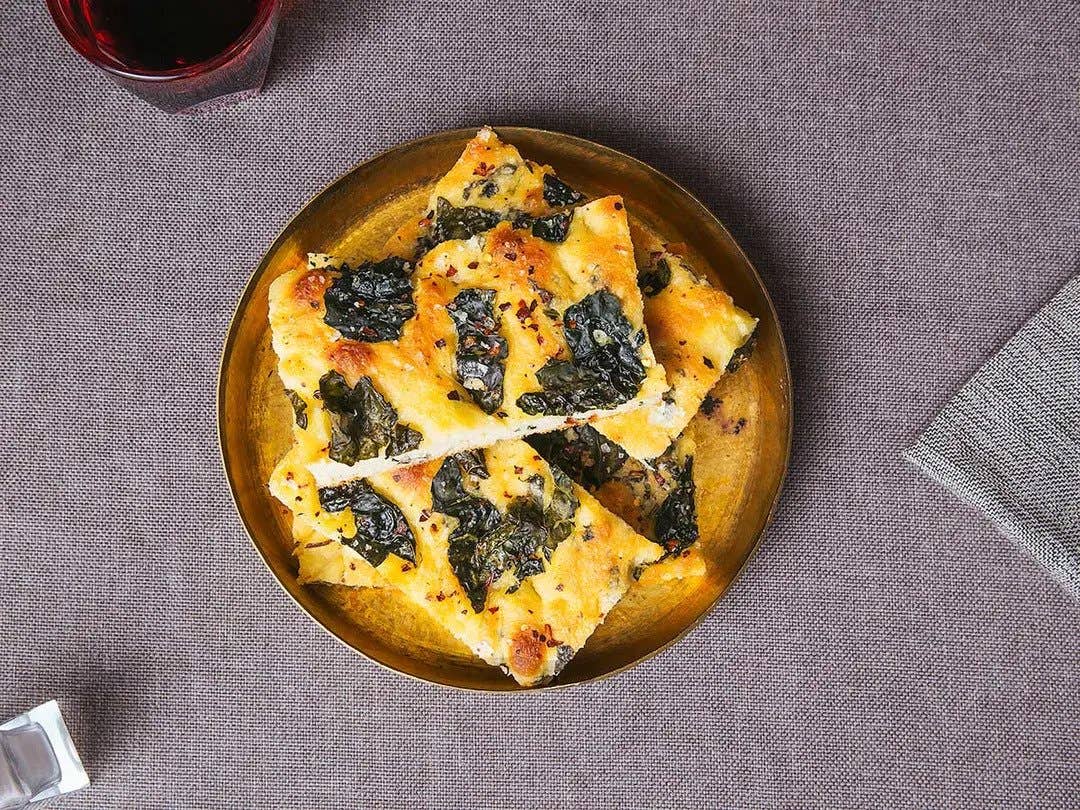
Kale and red pepper flakes add color and texture to this otherwise simple bread recipe. Get the recipe >

Bittersweet kale mingles with a tangy verjus and spicy pepper flakes in this spring greens recipe from chef Spike Gjerde. Get the recipe >
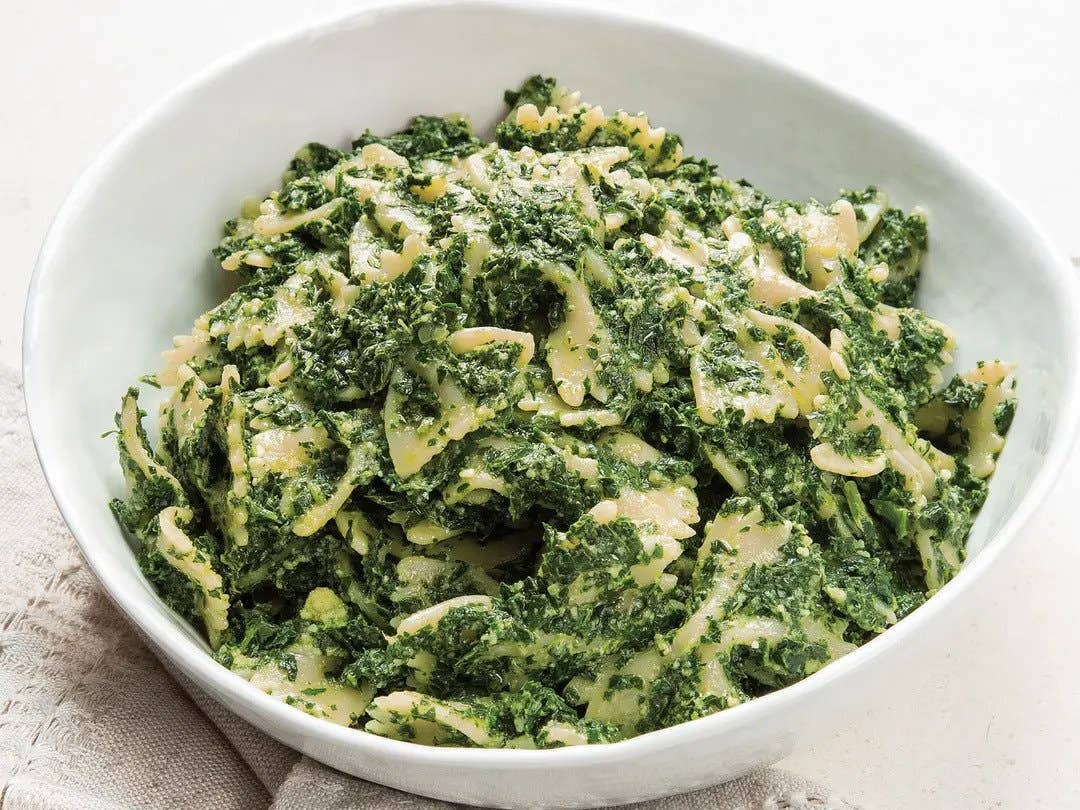
When most people think of pesto, the traditional Genoese version made with basil and pine nuts usually comes to mind. In this rendition, sweet and nutty lacinato kale replaces both of those ingredients. Get the recipe >
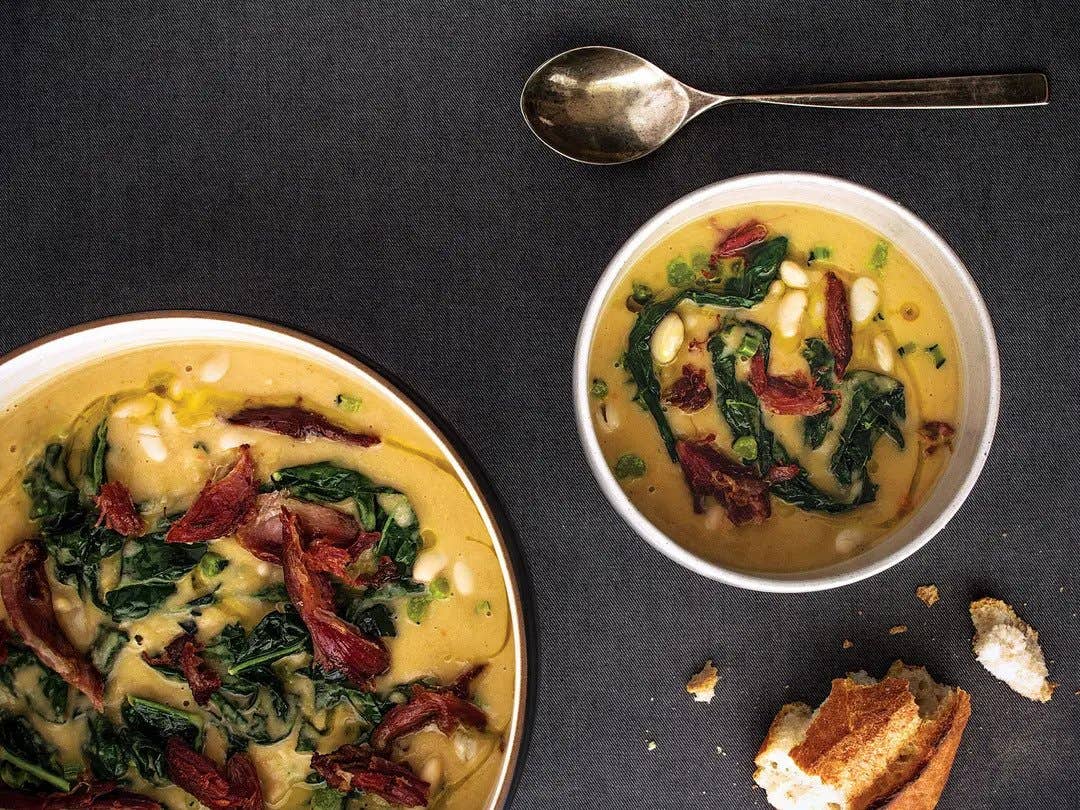
After flavoring the beans for this creamy winter soup from Kellie Evans and Farideh Sadeghin, smoked ham hock is shredded and pan-fried, intensifying its flavor. Lacinato kale cooks down quickly to add bright acidity to the beans. Get the recipe >

Bartender Christiaan Rollich of Los Angeles' A.O.C. Wine Bar combines kale-infused rum with a housemade green harissa syrup, which adds sugar for balance and a hint of jalapeño for pop. Get the recipe >
Keep Reading
Continue to Next Story


